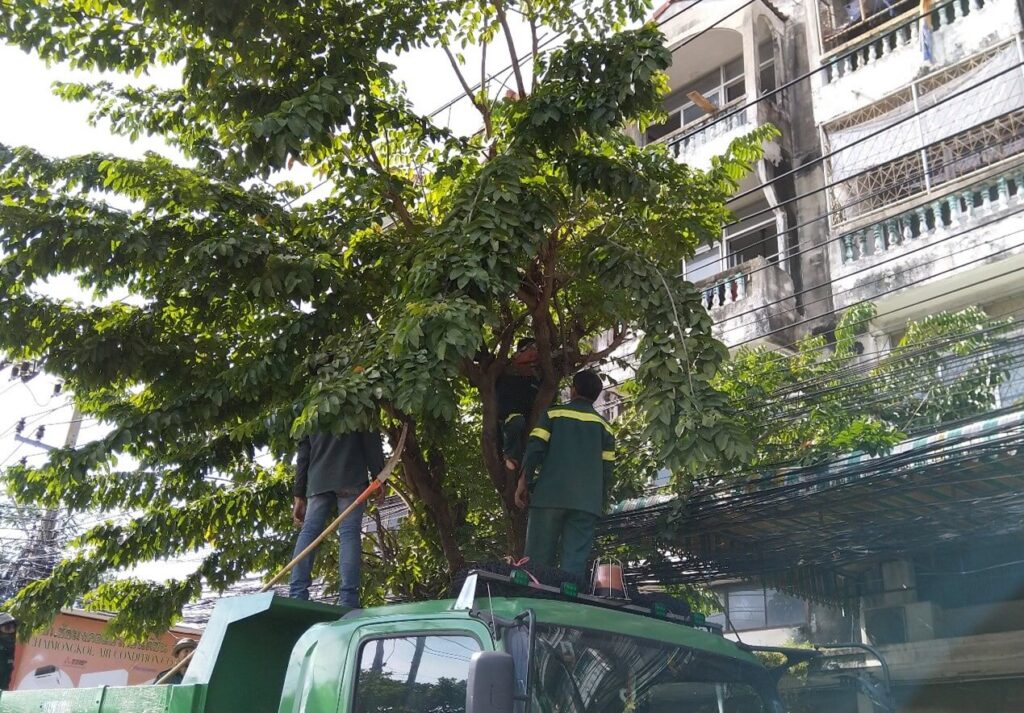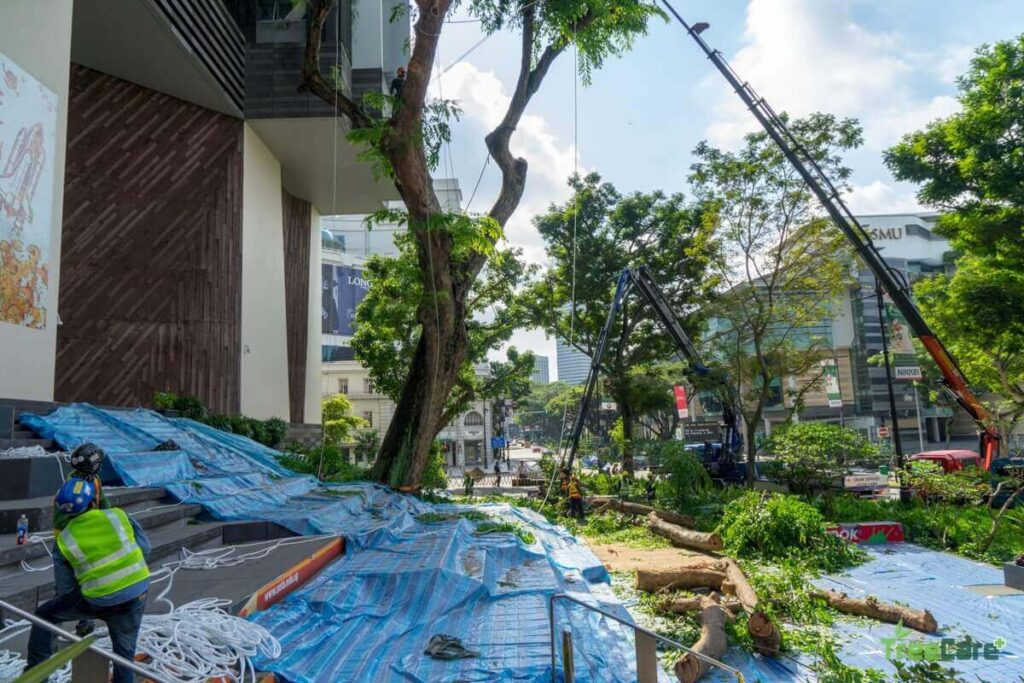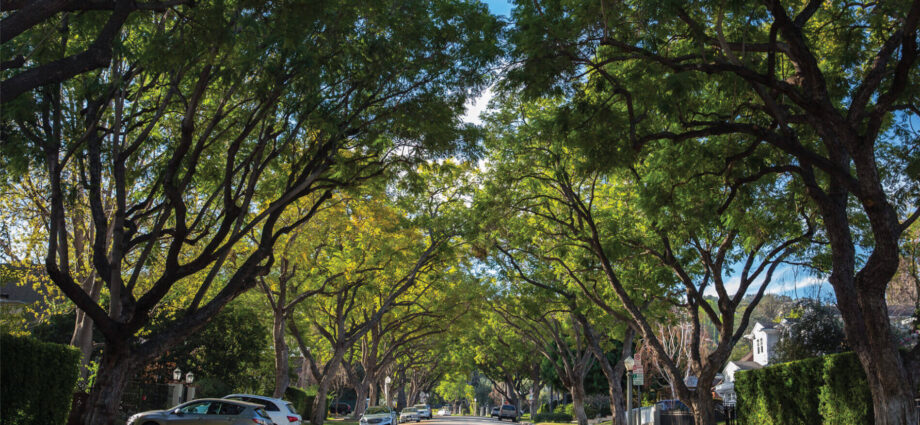The North Shore is home to a vibrant urban landscape with an abundance of greenery. Trees, in particular, play a vital role in maintaining the health and balance of this unique ecosystem. However, the process of tree removal poses numerous challenges that need to be addressed.
In this article, we will explore the importance of urban greenery, examine the difficulties associated with tree removal north shore, discuss the steps involved in the process, and propose solutions and alternatives to mitigate the impact of tree removal.
Understanding the Importance of Urban Greenery
Urban greenery encompasses all the vegetation within urban areas, including parks, gardens, and street trees. It is not just a matter of aesthetics; it plays a vital role in creating sustainable and livable cities. Trees, in particular, contribute significantly to the overall well-being of urban ecosystems. Click here for balancing urban living and greenery.
When we think of urban areas, we often picture concrete jungles with tall buildings and busy streets. However, the presence of green spaces is crucial for maintaining a healthy and balanced environment. These green areas act as lungs for the city, filtering pollutants and providing fresh air for its inhabitants.
The Role of Trees in Urban Ecosystems
Trees provide a wide range of ecological benefits. They help reduce air pollution by absorbing harmful gases such as carbon dioxide and releasing oxygen through the process of photosynthesis. Additionally, trees act as natural filters, trapping particulate matter and improving air quality. Their leaves capture dust, pollen, and other pollutants, preventing them from entering the respiratory systems of people living in urban areas.
But the benefits of trees go beyond air purification. Their extensive root systems also play a crucial role in preventing soil erosion and maintaining groundwater levels. By anchoring the soil, trees prevent it from being washed away during heavy rainfalls, reducing the risk of flooding. Moreover, their roots act as a sponge, absorbing excess water and slowly releasing it back into the ground, ensuring a steady water supply for other plants and organisms.
Health and Social Benefits of Urban Trees
The presence of trees in urban areas has a positive impact on the health and well-being of residents. Numerous studies have shown that exposure to green spaces and nature can reduce stress levels, enhance mental health, and promote physical activity. The calming effect of trees and the soothing sound of leaves rustling in the wind create a peaceful environment that helps people relax and recharge.
Urban trees also provide shade, reducing the urban heat island effect and improving overall comfort in densely populated areas. During hot summer days, the temperature in cities can rise significantly due to the abundance of concrete and asphalt, which absorb and retain heat. Trees, with their canopies and foliage, provide much-needed shade, lowering the ambient temperature and making urban spaces more pleasant for everyone.
Moreover, trees have a positive social impact on communities. They create gathering spaces, where people can come together, socialize, and engage in recreational activities. Parks and green areas become meeting points for families, friends, and neighbors, fostering a sense of belonging and community cohesion.
In conclusion, urban greenery, especially trees, is not just a matter of aesthetics. It plays a crucial role in creating sustainable and livable cities. From their ecological benefits, such as air purification and soil conservation, to their positive impact on health and social well-being, urban trees are essential for the overall quality of urban life. Therefore, it is vital to prioritize the preservation and expansion of green spaces in urban planning and development.
The Challenges of Tree Removal in North Shore
Despite the significant benefits of urban greenery, there are instances where tree removal becomes necessary. However, this process is not without its challenges, which often require careful consideration and planning.
Environmental Impact of Tree Removal
The removal of trees can disrupt the delicate balance of urban ecosystems. Trees provide habitat and food sources for various species of birds, insects, and other wildlife. When trees are removed, these organisms may lose their homes and food sources, leading to a decrease in biodiversity.
Additionally, trees play a crucial role in mitigating the effects of climate change. They absorb carbon dioxide, a greenhouse gas that contributes to global warming, and release oxygen into the atmosphere. The removal of trees can result in increased carbon dioxide levels and a reduction in air quality.
Furthermore, trees help regulate temperature by providing shade and reducing the heat island effect in urban areas. Without trees, cities can become significantly hotter, leading to increased energy consumption for cooling and discomfort for residents.

Legal and Regulatory Hurdles
Tree removal in urban areas is subject to numerous legal and regulatory requirements. Local ordinances and tree protection laws aim to preserve urban green spaces and protect significant trees from unnecessary removal. Obtaining the necessary permits and approvals can be a time-consuming process, which often requires professional expertise.
In addition to obtaining permits, tree removal projects may also need to comply with environmental impact assessments. These assessments evaluate the potential effects of the removal on the surrounding environment, including soil erosion, water quality, and wildlife habitats. Compliance with these assessments ensures that tree removal is carried out in an environmentally responsible manner.
Public Perception and Opposition
The removal of trees, especially old and mature ones, can also face opposition from the public. Many people have an emotional connection with these trees, considering them as significant landmarks or cultural symbols. Public engagement and education are crucial in fostering an understanding of the need for tree removal and exploring alternative solutions.
Engaging with the community through public meetings and consultations can help address concerns and provide an opportunity for residents to voice their opinions. Explaining the reasons behind tree removal, such as safety concerns, disease or pest infestations, and the need for infrastructure development, can help alleviate opposition and build trust.
Furthermore, alternative solutions, such as tree relocation or replacement programs, can be explored to mitigate the loss of trees. These initiatives can involve transplanting mature trees to new locations or planting new trees to compensate for the ones that are removed. By involving the community in these efforts, a sense of ownership and pride can be fostered, leading to a more positive perception of tree removal projects.
The Process of Tree Removal
The process of tree removal involves several steps to ensure safety, efficiency, and minimal environmental impact. Each step needs to be carefully executed to maintain the integrity of the urban greenery.
Identifying Trees for Removal
Prior to tree removal, a thorough assessment is conducted to identify the trees that need to be removed. Factors such as tree health, structural stability, disease infestation, and proximity to structures are taken into consideration.
During this assessment, arborists carefully inspect the trees, looking for signs of decay, disease, or damage. They also evaluate the overall health and structural stability of the tree. This process involves climbing the tree, examining the trunk, branches, and foliage, and sometimes using specialized tools to measure the tree’s vitality.
Arborists also consider the tree’s location in relation to nearby structures and utilities. If a tree is too close to a building or power lines, it may pose a safety risk and need to be removed.
The Actual Process of Tree Removal
Once the trees have been identified, the removal process begins. Qualified arborists use specialized equipment and techniques to safely cut down the tree. The debris is then carefully removed and disposed of in an environmentally responsible manner.
Before the actual removal, the arborists plan the process to ensure the safety of everyone involved and minimize any potential damage. They consider factors such as the tree’s size, location, and surrounding environment.
Arborists use a variety of tools and equipment to remove the tree. This may include chainsaws, ropes, pulleys, and cranes, depending on the size and complexity of the job. They carefully cut the tree into sections, starting from the top and working their way down. This technique, known as sectional felling, allows for greater control over the tree’s descent and minimizes the risk of damage to nearby structures.
Once the tree is down, the arborists carefully remove the debris from the site. This may involve chipping the branches and trunk into mulch, which can be used for landscaping or composting. Larger sections of the tree may be cut into logs for firewood or other purposes.
Environmental responsibility is a key consideration during the tree removal process. Arborists aim to minimize the impact on the surrounding ecosystem by carefully disposing of the debris. They may work with local recycling centers or composting facilities to ensure that the tree waste is repurposed in an environmentally friendly way.

Solutions and Alternatives to Tree Removal
While tree removal may sometimes be necessary, there are alternative approaches that can be explored to mitigate its impact on urban greenery.
Urban Tree Conservation Strategies
Implementing tree conservation strategies can help preserve valuable urban trees. This can include regular tree maintenance, such as pruning and fertilization, to ensure their long-term health and structural integrity. Protecting the root zones and creating tree-friendly construction practices are also essential in minimizing damage during development projects.
Innovative Urban Planning for Green Spaces
Urban planning plays a crucial role in maintaining and expanding urban green spaces. Incorporating green infrastructure, such as green roofs, vertical gardens, and urban forests, can help compensate for tree removal and enhance the overall urban landscape. Furthermore, tree planting programs and community involvement initiatives can encourage residents to actively contribute to urban greening efforts.
The Future of Urban Greenery in North Shore
As the North Shore continues to grow and develop, it is essential to prioritize sustainable urban greenery practices to ensure a healthy and resilient environment.
Policy Recommendations for Sustainable Urban Greenery
Adopting comprehensive policies that promote sustainable urban greenery is vital. These policies should focus on tree protection, urban planning guidelines, and incentives for tree planting initiatives. Collaboration between government entities, environmental organizations, and the community is essential in implementing and monitoring these policies.
The Role of Community in Urban Tree Conservation
Engaging the community in urban tree conservation efforts is crucial for long-term success. Education programs, community tree planting events, and volunteer opportunities can foster a sense of ownership and pride in the urban greenery. Encouraging active participation and interaction with nature can help create a sustainable and inclusive urban environment.
In conclusion, the North Shore’s urban greenery faces both challenges and solutions in the context of tree removal. Understanding the importance of urban trees, addressing the challenges associated with tree removal, implementing sustainable practices, and fostering community involvement are all crucial steps towards maintaining a vibrant and resilient urban ecosystem. By embracing these solutions, we can ensure the preservation of the North Shore’s unique urban greenery for generations to come.

